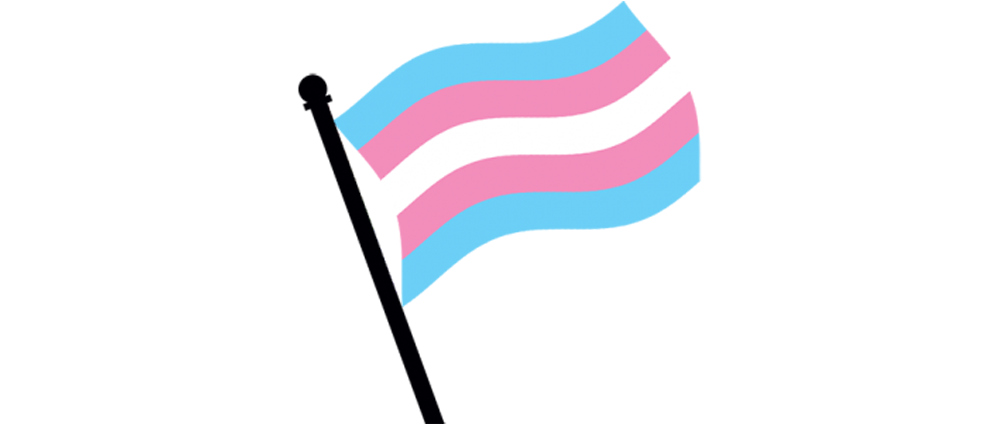09.12.2021by Sayr Motz
How to Support Your Trans Colleagues

How to Support Your Trans Colleagues
by Sayr Motz
Hello, my name is Sayr and I use they/them pronouns. I’m nonbinary, which means that I’m neither man nor woman (think of me like a gender qubit in superposition between man and woman!) QuTech’s ongoing work to expand gender equity in quantum computing is a good step in the right direction, but as a nonbinary person, most diversity and inclusion initiatives still leave me feeling very excluded and unrepresented. As a field, we are now focused on recruiting and retaining women, which is wonderful and necessary, but talented researchers exist also outside the gender binary and deserve our advocacy too.
As another gender minority in quantum, my experience often intersects with the experience of women, but there are a few unique challenges that transgender people face in the workplace that cisgender (i.e. non-transgender) people do not. Gender dysphoria—the incongruence between the gender you identify with, and the gender you are perceived as—is an exhausting, isolating and emotionally painful experience. These negative emotions can be triggered unexpectedly when you are misgendered by others, or when your identity is completely neglected in conversations about gender. Yet, some transgender people may choose to live with dysphoria if they feel unsafe to come out to their colleagues, which is frequently the case when our workplaces lack gender literacy and allyship. But you can help!
1) Offer your own pronouns, so it is not as intimidating for trans people to do it
- Introduce yourself to new people with your name and pronouns
- Include your pronouns on conference name tags, email signatures, and zoom title
2) Adopt gender-neutral language so that nonbinary people are included
- Address groups by “everyone” or “folks” instead of “ladies and gentlemen”
- Use “they” instead of “he/she” when speaking about someone whose gender is unknown
3) Learn how to speak about trans topics respectfully and call out transphobic behavior
- Medical transition is a very personal topic, so avoid asking prying questions about it to people you don’t know well
- Understand that someone’s name, pronouns, body type, or clothing don’t necessarily indicate their gender (these are all just ways to describe and express ourselves)
- Correlating gender to biology is incorrect. Biological sex isn’t binary [1] and the gender binary is a social construct introduced globally through colonialism [2].
- Practice using gender-affirming language (“she was assigned male at birth” instead of “she was born a man”, “when they presented as a man” instead of “when they were a man”, “he transitioned” instead of “he changed genders”, etc…)
4) Speak up on behalf of people who are misgendered
- Gently correct colleagues who use the wrong name or pronouns (this takes a lot of emotional labor for transgender people to do themselves!)
- If you accidentally misgender or misname someone, don’t apologize and make a big deal out of it, just restate what you were saying in the correct way and move on
5) Advocate for gender inclusive infrastructure
- Demand that nonbinary people be included in gender equity statistics and strategies for gender minority recruitment and retention
- Challenge the lack of gender-neutral bathrooms in your workplace
- Pressure relevant people to revise paperwork that requires people to select a binary gender and neglects space for preferred names
As we collectively build a quantum workforce and make decisions that will indelibly shape an entire industry, it is imperative that we expand our mission towards gender equity to include nonbinary people as well as women. Our ongoing work to assemble a diverse community within our field is wasted if the marginalized members of our community still feel excluded or unsafe. The inclusion of minorities is only achievable through the active, sustained allyship of the majority, and it is time that our field makes space for transgender people to contribute and thrive.

About the author
Sayr grew up in Dayton, Ohio, USA, and after graduating from the University of Pittsburgh, they moved to Delft to begin a MSc in applied physics. Currently, they are working on scaling up Germanium quantum dot arrays in the Veldhorst group. In addition to their research, Sayr is also passionate about their pet turtle Buddy and volunteering at Outsite. In their free time, they enjoy oil painting, kickboxing, and playing the piano.
References
[1] Blackless M, Charuvastra A, Derryck A, Fausto-Sterling A, Lauzanne K, Lee E. How sexually dimorphic are we? Review and synthesis. Am J Hum Biol. 2000 Mar;12(2):151-166. doi: 10.1002/(SICI)1520-6300(200003/04)12:2<151::AID-AJHB1>3.0.CO;2-F. PMID: 11534012.
[2] O’Sullivan S. The Colonial Project of Gender (and Everything Else). Genealogy. 2021; 5(3):67. https://doi.org/10.3390/genealogy5030067

